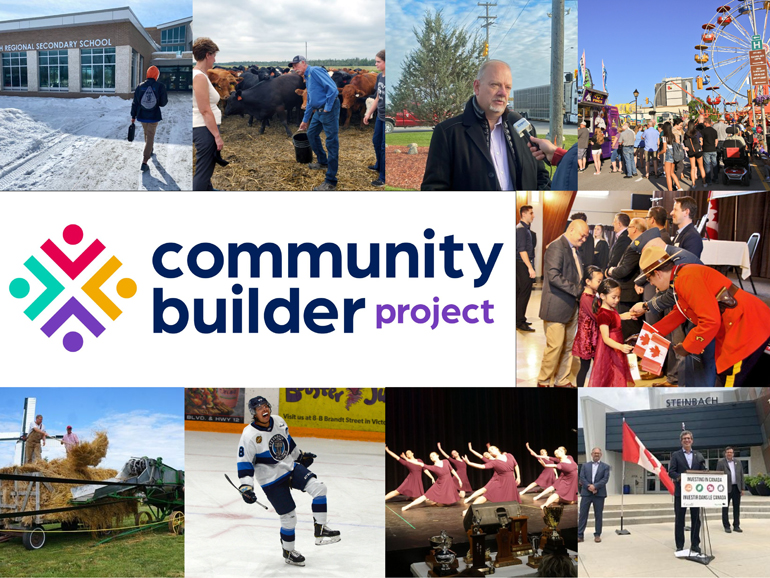How can local news better serve readers, viewers, and listeners? Given the quickly-changing landscape of reporting and storytelling, can content be delivered more timely and effectively?
These are the questions at the heart of the Community Builder Project—a research endeavour launched through the Google News Initiative with a mandate to pinpoint data-driven issues facing local journalism and collaborate with communities in addressing them. As Project Content Lead Trev Schellenberg explains, it’s all about community enrichment.
“An informed community is a better community,” he says. “The more we know about each other and what’s happening in our part of the world, the better we can be at building our community in meaningful ways. This can look like making more informed decisions at election time or hearing about ways to help our neighbours when they’re in need.”
The key to the Community Builder Project is public input.
Through an online survey, community members are invited to share their thoughts regarding local news coverage. Anyone interested in continuing the discussion is encouraged to join a virtual focus group. It’s a rare opportunity for small cities, towns, and rural areas to shape the future of the content they consume, untied from the interests of large-market media.
For example, respondents will be asked about the breadth, depth, and diversity of current coverage, and if segments of the population are being left out of the narrative.
“As communities grow, we want to ensure we continue to meet the needs of all people and groups within those communities,” says Dave Lehman, Project VP. “We need to ensure we’re providing the best source of local news and information for everyone—not just a specific demographic or age group.”
Lehman adds that the Community Builder Project will seek out those areas where local journalism could be improved—where it isn’t connecting—and then apply the solutions suggested by the focus groups.
“We’ll implement a number of improvements, innovations, and enhancements to content and processes, and then re-measure, through formal research, to ensure the community feels the improvements are having the desired effect.”
Local journalists and content creators have an especially important role to play in the strengthening of robust, relevant reporting and analysis. When they focus their lens, microphone, or keyboard on regions where they live, they’re helping to build up their communities.
“Reporters who live in and understand the community they’re reporting on tend to treat it like home,” says Schellenberg. “They don’t try to tear it down but rather help it grow by telling its stories and showcasing its people. They can still tell the truth, but with respect and understanding.”
Of course, none of this much matters if the content doesn’t end up in front of the people who might otherwise consume it. In an age of information overload, says Lehman, it’s vital that community outlets consider both where and when their content is distributed.
“Part of this process will be understanding how we can deliver content to people in the community in better ways, ways that make it quicker and easier for everyone to get the local information they need.”
Lehman also encourages everyone in the community to help the Community Builder Project understand how they can be better served. Adds Schellenberg: “All voices and opinions are so important. You can help shape the future of your community.”

















